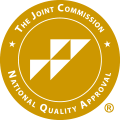Pacific Grove Hospital is a nationally recognized 68-bed acute psychiatric and chemical dependency treatment center offering inpatient & outpatient services for psychiatric illnesses, addictions & co-occurring disorders.
Understanding Cocaine Addiction
Learn about cocaine and substance abuse
Cocaine is an illegal and powerfully addictive stimulant derived from the leaves of the coca plant indigenous to South America, which provides users with a short burst of rapture, energy, and chattiness. Additionally, cocaine use can potentially lead to hazardous physical side effects such as hypertension and increased heart rate which can cause cardiovascular complications such as stroke or heart attack. There are two primary forms of cocaine that are abused – powdered cocaine, which is used intranasally (snorted) or dissolved in liquid and injected into a vein (IV drug use), and crack cocaine, which is a smokable rock-like crystal.
The route of administration affects the strength and duration of the high – injecting or smoking cocaine leads to fast absorption into the bloodstream and crosses the blood-brain barrier quickly, causing a shorter, but more intense high. Snorting cocaine offers a slower absorption into the bloodstream, which produces a less intense, longer-lasting high. The high from smoking or injecting cocaine may last 5 to 10 minutes, while the high from snorting coke lasts between 15 and 30 minutes. This relatively short duration leads people to “binge” on cocaine, or using the drug repeatedly within a moderately short period of time at progressively higher doses. Bingeing on coke can quickly lead to addiction and physical dependence upon the drug. While addiction to cocaine affects every part of a person’s life, with proper detox, therapeutic interventions, and long-term support, people addicted to drugs like cocaine are able to overcome their addiction and learn to lead a happy, sober life.
Statistics
Cocaine addiction statistics
In 2009, the National Survey on Drug Use and Health (NSDUH) estimated that there were 1.9 million current cocaine users, of which approximately 359,000 abused crack cocaine. The highest rate of cocaine use occurs between the ages of 18 and 29, with about 1.5% reporting past-month usage. Each day, about 5,000 people try cocaine for the first time; 75% of those become addicted to the drug.
Causes and Risk Factors
Causes and risk factors for cocaine addiction
Addiction experts agree that addiction is not the result of a single cause or risk factor, rather it is a combination of genetic, physical, and environmental risk factors working together to cause addiction. The most commonly cited causes and risk factors for cocaine addiction include:
Genetic: Addiction is known to run in families. People who have a first-degree relative, such as a parent or sibling, who struggle with addiction are at greater risk for developing addiction themselves. However, many people who develop addiction do not have a familial history of the disease and conversely, many people who have a family history of addiction do not become addicts.
Physical: Researchers have found that repeated cocaine exposure causes changes in the genes that lead to an altered level of a protein in the brain that regulates the action of dopamine, a neurotransmitter. Additionally, functional imaging of the brain (MRIs and CT Scans) have found that cocaine actually changes the structure of the brain, although it is still unclear how this affects addiction.
Environmental: It’s been found that people who begin to use drugs or alcohol at younger ages are at higher risk for developing an addiction later in life.
Risk Factors:
- Being male
- Peer pressure
- Undiagnosed or untreated mental health disorders
- Lack of family involvement
- Anxiety, depression, and loneliness
Signs and Symptoms
Signs and symptoms of cocaine addiction
The symptoms of cocaine abuse and addiction are different from person to person based upon genetic makeup, length of addiction, the amount used, and the presence of other drugs in the body. The most common symptoms of cocaine abuse include:
Behavioral Symptoms:
- Extreme bursts of energy
- Engaging in illegal activities
- Speaking very quickly
- Excited, exuberant speech
- Conversation jumping around to multiple topics
- Risk-taking behaviors
Physical Symptoms:
- Tolerance
- Physical addiction
- Seizures
- Racing heart
- Cardiac arrhythmias
- Changes in sleep and eating patterns
- Hypertension
- Dilated pupils
- Sweating
- Increased libido
- Sudden cardiac death
Cognitive Symptoms:
- Extreme focus and concentration on one task
- Increased alertness
- Increased feelings of competence
- Psychosis
Psychosocial Symptoms:
- Anxiety
- Feeling of supremacy
- Depression
- Hallucinations
- Restlessness
- Paranoia
- Psychological addiction
- Euphoria and feelings of well-being
- Mood swings
Effects
Effects of cocaine addiction
After prolonged abuse, cocaine can cause a number of severe long-term effects that will negatively impact the user’s life. These effects will vary based upon individual makeup, route of administration, length of addiction, and frequency of cocaine use.
- Lower work ethic and loss of job
- Permanent damage to blood vessels, heart, and brain
- Destruction of nose tissue
- Respiratory failure
- Loss of sense of smell
- Liver, kidney, and lung damage
- High blood pressure
- Infectious diseases
- Abscesses at injection site
- Financial difficulties
- Legal problems
- Incarceration
- Malnutrition and weight loss
- Strained or ruined interpersonal relationships
- Tooth decay
- Auditory and tactile hallucinations
- Sexual problems, reproductive damage, or infertility
- Severe depression
- Delirium or psychosis
- Tolerance and depression
- Stroke
- Heart attack
- Death
Withdrawal & Overdose
Effects of cocaine withdrawal and overdose
Effects of Cocaine Withdrawal:
When a cocaine addict suddenly stops using, withdrawal symptoms will set in quickly. Cocaine withdrawal is not usually life-threatening however withdrawal is associated with a number of unpleasant side effects. That said, it’s always best to seek professional help during withdrawal to prevent complications and reduce discomfort.
Symptoms of cocaine withdrawal may include:
- Agitation
- Restlessness
- Depression
- Extreme cravings
- Anhedonia
- Increased appetite
- Vivid and unpleasant dreams
- A decrease in activity levels
- Anxiety
- Irritability
- Fatigue and sleepiness
- Aggression
- Paranoia
Effects of Cocaine Overdose:
Cocaine overdose is a serious medical emergency. Cocaine overdose can be deadly; anyone suspected of suffering from an overdose should be seen by medical professionals immediately. While cocaine overdose can occur through any method of abuse, overdose is more likely to occur when cocaine is injected into the vein as the rapid drug enters the body.
Symptoms of a cocaine overdose include:
- Chest pain
- Seizures
- Delirium
- Nausea and vomiting
- Irregular breathing
- Hyperthermia
- Tachycardia
- Anxiety and agitation
- Paranoia
- Panic attacks
- Hallucinations
- Heart attack
- Stroke
- Death
Co-Occurring Disorders
Cocaine addiction and co-occurring disorders
A number of co-occurring, comorbid mental health disorders have been linked to cocaine abuse and addiction. These co-occurring disorders include:
- Depressive disorders
- Post-traumatic stress disorder (PTSD)
- Antisocial personality disorder
- Attention-deficit hyperactivity disorder (ADHD)
- Anxiety disorders
- Bipolar disorder
- Schizophrenia
- Alcoholism
- Other addictions












